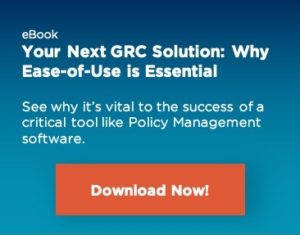Cost Savings Achieved By Automating Financial & Compliance Processes
This year, the number of organizations instituting automated controls for spreadsheet management will increase as they recognize the risks these applications pose to their business. This will make the use and business purpose of spreadsheets more transparent, but organizations will also gain operational efficiency cost savings.
Our research shows that today, 88% of internal audit, finance, compliance and risk management professionals recognize the risks posed by spreadsheet applications. Only 24% of organizations are systemically enforcing a manual control policy; and a mere minority have actually instituted automated controls to mitigate spreadsheet risks. Professionals are spending, on average, 43% of their time monitoring and validating information on spreadsheets. Those in management are spending closer to 47% of their time on this activity.
In the absence of technology-led automated processes, the burden of manually ensuring the accuracy of data held in spreadsheets is falling entirely on the professionals. Consequently, with a vast number of business-critical processes being undertaken in often poorly controlled spreadsheets, the benefit of the spreadsheet to users is gradually diminishing. The advantages of using spreadsheets – i.e. flexibility, agility, efficiency and productivity – are negating as managing them is becoming a drain on the time and resources of users. Also, nearly 50% of risk, finance and compliance professionals expect a significant financial and/or reputational loss event attributed to spreadsheet error to occur in the next two years.
A valuable tool that’s poorly managed
Despite this, and paradoxically, the use of spreadsheets for business-critical processes is expected to grow over the next two years according to auditors (nearly 60%), regulators (40%) and risk and compliance professionals (nearly 45%). Clearly, spreadsheets are a valuable tool for certain processes and tasks. They do the job, where perhaps corporate financial systems, which are the preferred option for operational processes, fall short of meeting user requirements. Spreadsheets are extensively used in financial environments for complex calculations and modelling. At the same time, spreadsheets are one of the key contributors of financial, regulatory, operational and reputational risk.
There is no merit in running a business using uncontrolled spreadsheet applications. These tools warrant the same level of scrutiny and management as that accorded to corporate financial systems. By automating the management of the financial and compliance processes in the spreadsheet environment, organizations reduce the risk of losses, compliance-related penalties and long-term reputational damage. Importantly, organizations optimize their efficiency and productivity gains and thereby make tangible financial savings as a result of reduced manual effort.
Cutting the (appalling) costs of manual checking
Here’s a simplistic scenario: there’s a population of 100 operational spreadsheets in an organization, with an average of eight hours per month being spent on each application by an employee costing $50 an hour. So, each spreadsheet costs the company $400 per month or $4,800 annually to operate. For the full spreadsheet population, the tangible, operational cost to the enterprise is $480,000.
Automation enables organizations to achieve a well-managed, controlled and yet flexible and agile spreadsheet environment. Technology can support spreadsheets across their lifecycle – from creation through to retirement and decommissioning by incorporating them into the core enterprise systems. This entirely eliminates the risk and inefficiency of manual checking, and offers assurance that the outputs derived from the data in spreadsheets are indeed accurate.
[bctt tweet=”88% of internal audit, finance, compliance and risk management professionals recognize the risks posed by spreadsheet applications.” via=”no”]
Discover PolicyHub
It's the Policy Management solution that’s easy to use, so you can build stronger compliance.



